
I know this blog post might make everybody’s scuba diving bucket list much longer than it already is, but the curious ones will sure be happy. Plus, the seasoned scuba divers will be probably discover some destinations they might not have considered as diving destinations before. The adventurous traveler that scuba dives might be tempted of turning a future trip into a diving trip and get in the water to explore less known scuba diving destinations!
Also, this blog post comes right in time as we are adding a bunch of destinations and new liveaboards diving cruise these days. Let’s explore the best remote diving destinations in the world!
1. The polar regions: Antarctica & Arctic
Let’s break the ice and start this post wildly with Antarctica and Arctic! It’s probably safe to say that most of diving enthusiasts and travelers are northerners, heading to warmer world zone to spend their vacation time. That being said, the most adventurous travelers and the scuba divers that want to discover pristine locations will definitely look into these two.

Who can dive there? As you probably expected, it definitely requires previous cold water scuba diving experience to explore the underwater world of the polar areas. Otherwise, it’s strongly advised to have a very fair minimum of 30 logged dives, including a bunch in cold water, before diving in Antarctica or Arctic.
Antarctica & Arctic: among the best diving destinations!
What’s there? Stunning landscape, pristine dive sites and a whole bunch of marine life you won’t see anywhere but in the polar areas.
In Antarctica, you will meet with whales, seals, penguins, krills, a bunch of fishes, jellyfishes, starfishes, etc. Of course, there’s also a whole lot of wild birds to watch. In Arctic, you might encounter polar bears and walruses, but you can’t dive with them. You will have the chance to dive with seals, a vast array of fishes and marine life, whales and even explore wrecks.
How to get there? The main gate to get to Antarctica is Ushuaia, in Argentina, which is the departure point of the polar liveaboard cruises. The closest airport is Malvinas Argentinas Ushuaia International Airport (USH), which you can get to from different domestic flights in Argentina.
As for Arctic, most liveaboard diving cruises will launch from Iceland. Indeed, you will need to get to towns like Longyearbyen in Spitsbergen, airport code LYR, or Akureyri in the north, airport code AEY, in order to board a cruise.
The main liveaboard boats exploring the two polar regions are the Ortelius and the Plancius.
2. Cocos Island, Costa-Rica
Some of you might have seen this one coming from far! Indeed, the “off the beaten path” scuba diving destinations are not necessarily unknown places, at the contrary, some are famous for their remoteness. That’s the case of the Cocos Island of Costa-Rica, which lays about 550 km (340 mi) off the country’s coast.

Cocos Island, Costa Rica. Photo by Alexander Safonov
Who can dive there? The Cocos Island dive sites are considered fairly challenging to dive as per the depth and strong currents. Most liveaboard operators will require an Advanced open water level, and a minimum of 30 dives under the belt.
What’s there? Sharks! Lots of sharks! Of course, there’s much more as the area has been a protected marine reserve for over 20 years. All ecosystems in the regions are teeming with life.
How to get there? The 32 hours crossing to get to the island is definitely the first challenge. Pick a nice liveaboard as the comfort is a matter of important in this diving trip. The main point of departures for liveaboard cruises is the port of Punterenas, just outside of Costa Rica‘s capital of San Jose, which you can reach in 90 minutes by car/bus.
Liveaboard vessels going to Cocos Island include the Okeanos Aggressor, the Argo and the UnderSea Hunter.
3. Mexico’s Baja California islands : Socorro & Guadalupe
The islands of Mexico’s pacific coast are known for different reasons, but are all great to explore. The most remote areas of the pacific side of Mexico are the Guadalupe and Socorro Islands. You have to board a scuba diving cruise to discover. Guadalupe, located 241 km (150 mi) off shore, is famous for it’s cage diving with the great white sharks. The Socorro offer somewhat a smoother ride, a little less of adrenaline and more typical dives!
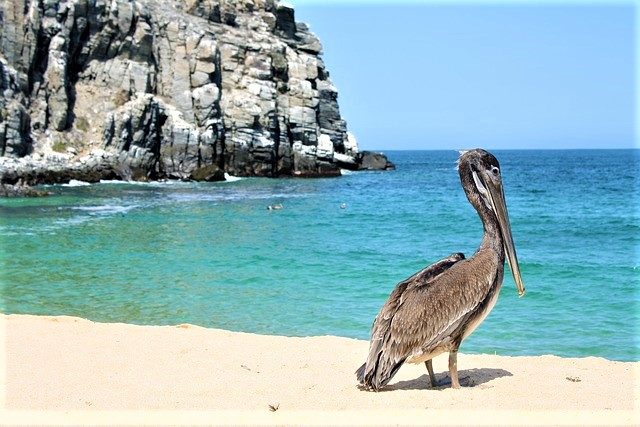
Who can dive there? The requirements vary a lot with the different liveaboards, verify directly with the boat you think of taking. The Socorro’s are generally considered as an advanced destination. Some sites are suitable to OWD as well, check the itinerary. As for the great white shark dives of Guadalupe Islands, I would say it’s mostly for adrenaline junkies!
What’s there? Great whites for the Guadalupe, and a whole world of marine life for the Socorro Islands. Indeed, beside the famous Giant Manta Ray dives in the Socorro Islands, they are a great opportunity for large pelagic encounters including many sharks species, whales, etc.
How to get there? The main port to get to Guadalupe Island is San Diego. As for the Socorro Islands, Mexican liveaboard cruises usually leave from either Cabo San Lucas or San Jose del Cabo, in the Baja California area.
Lots of liveaboards like the Solmar V and the Nautilus Belle Amie are scheduling diving cruises to both the Socorro Islands and the Guadalupe Island. You’ll find more boats exploring the area on our Best Mexican Liveaboards page.
4. The Red Sea differently : Sudan and Djibouti
While the Egyptian Red Sea is one of the most common dive destination in the world, we can’t say the same about Sudan and Djibouti. Indeed, the Sudanese coast on the Red Sea offers untouched reefs and a higher density of marine life than it’s northern counterpart. As for Djibouti, it forms the horn of Africa, and it gets the best of the southern Red Sea and the Indian Ocean.
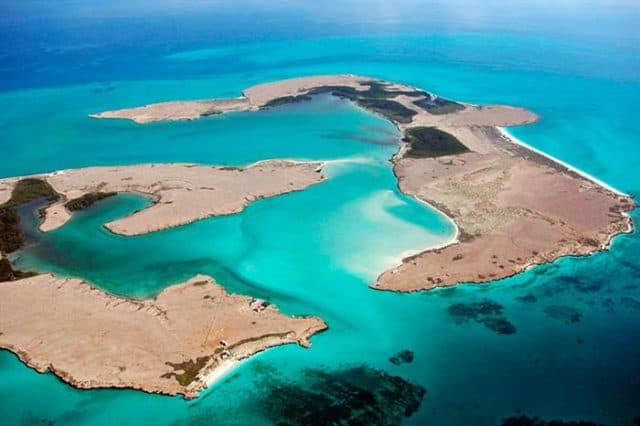
Who can dive there? On most dive sites, pretty much anyone can venture in the waters of Sudan and Djibouti.
What’s there? The Djibouti itineraries are mostly on the Indian Ocean side, with areas like the Seven Brothers Islands, Gulf of Tadjourah and Ghoubet al Kharab visited. Thanks to the narrow passage, the water is channeling through and brings a load of marine life. The whale sharks spends some of the winter months there. Otherwise, you will probably meet with manta rays, nurse sharks, pilot whales, etc.
As for the Sudanese side of the Red Sea, it’s known for it’s diverse shark population as well as an amazing underwater landscape.
How to get there? You can get to Djibouti through the Djibouti Ambouli International Airport. Liveaboard cruises, such as the one offered by the Lucy, are leaving from the Djibouti Marina.
As for Sudan, the main ports of departures for liveaboard vessels are Port Sudan, and Port Ghalib, which is on the Egyptian side. Most people will get to Sudan via Egypt.
5. Australia’s far away Rowley Shoals
The remoteness of the wonderful Rowley Shoal’s of Australia makes it one of the most pristine dive destinations in the world. Located about 300 km off the coasts of Northern Australia, they are only accessible to a few hundreds of divers each year.
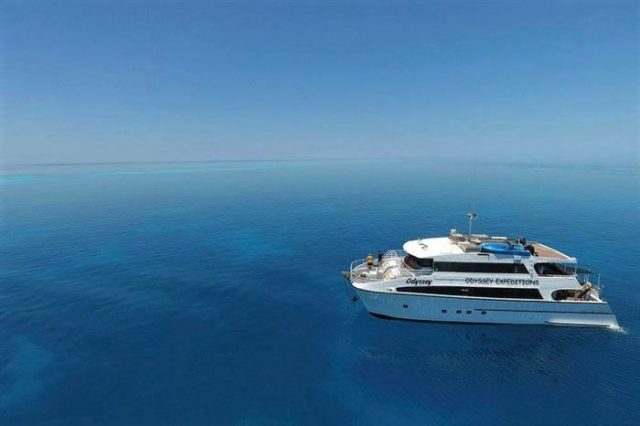
Who can dive there? Everyone can explore the shoals, there are sites for levels ranging from OWD to a professional DM.
What’s there? The Rowley Shoals are totally shielded from tourists divers and so the marine life is healthy and plentiful. All types of dives are usually included on a trip. You will usually have night dives, canyons dives, lagoon dives, drift dives, walls and caves dives.
How to get there? A scuba diving cruise will get you to the pristine diving destination. The town of Broome is the usual point of departures for liveaboard boats such as the Odyssey and the True North.
.
Of course, some other destinations could have made the list. I can think of some of Micronesia’s Islands like Yap & Chuuk, the famous Galapagos Islands, some Raja Ampat areas… what else would you put on this list ?
Now you know about the best remote scuba diving destinations! Are you going to venture to any of these magical underwater worlds soon? Let us know in the comment below! Safe bubbles!
 Destinations
Destinations

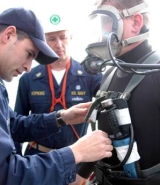
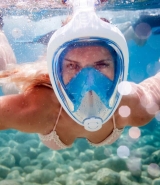
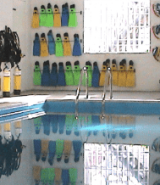





Great post. The cold dives sound amazing, but probably not on my bucket list. The Cabo dives sound more interesting. Don’t need the great whites though. I’ve seen one up close off the coast of California. Don’t need to stink up my dry suit again!!
Is there a best season for Soccorro trip? Vis, transitory wildlife, and lack of hurricanes are important, eh?
Hi John!

Thank you
I’m not sure about the cold dives either – nor the great whites – but there’s many fearless / limitless divers in this world and I admire them. This post is definitely inspiring to adventurous ones! Someday, maybe
As for the best time to visit the Socorro Islands, it’s definitely the winter – early spring months. You’ll find more details clicking on the Baja California/Socorro link.
Happy bubbles!
Just returned from a trip to the Antarctic. Whilst we didn’t dive, the water clarity was sooo stunning that we wish we had been. It would be so cool to see the penguins underwater.
Hi Julie!
Wow, that sounds amazing! Was it an adventure cruise?
Best travels
Superb! I’ll surely add these to my bucket list. Scuba diving in these best diving destinations of the world will be real fun.
Thank you!
Best bubbles!
Great read! I will come back for more.. this is most adventurous..
Hi!
Thank you for this nice comment! Much appreciated
Have a great day!
Great information about scuba diving destination.
Hi!
Thank you for the kind words!
Are there any destinations that you visited on this list? Feel free to leave us a comment about your experience!
Best bubbles, always!